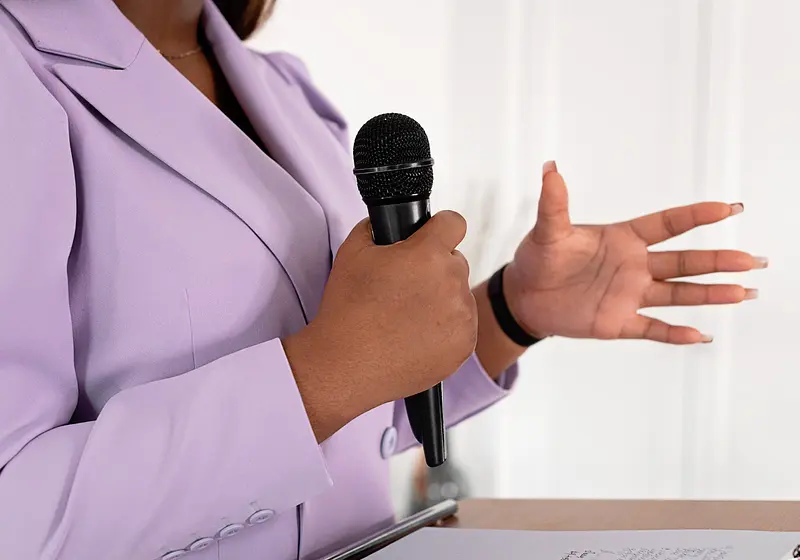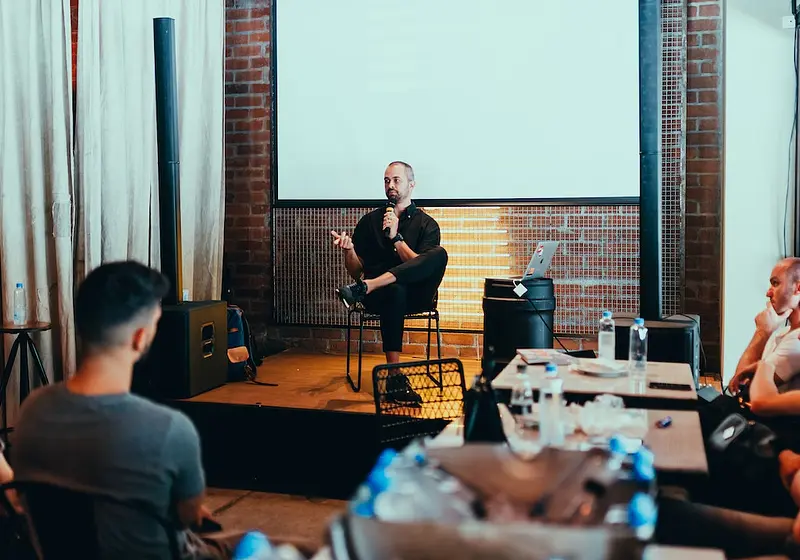Presentations. A nightmare for some, and a blessing for others. For many, though, it is a nightmare.
It can be so for numerous reasons; social anxiety said presentation being a major component of one's coursework, and perhaps sometimes being overly conscious of oneself. We don't ever have to like presentations, but it is an important skill everyone needs to cultivate in this day and age. The tips given in this article attempt to view as many facets of class presentations as possible to cultivate an organic approach to tackling the issue of giving class presentations.
Let us slide into your dms 🥰
Get notified of top trending articles like this one every week! (we won't spam you)1. Design your Presentation Material Well
You don't have to put a lot of effort into making your presentation material super aesthetic. You want all the attention to be on you, of course. You can use various templates online to help you take care of that.
Some great websites include slidesgo and slidescarnival. Alternatives to Microsoft PowerPoint such as Canva, Google Slides, and Prezi are great and easily customizable too. It should be noted that a simple layout can sometimes be better than a crowded beautiful layout.
Some design principles to keep in mind would be to not put blocks of text on a single slide and use a minimalist background instead of a busy one. Further tips would be to use background colors that please the eye, use concise bulleted or numbered lists, matching font types, sizes, and colors. Try not to make your presentations text dense by using images and diagrams where possible and appropriately align them to look neat. Consider using one of PowerPoint’s built-in templates to let the program do the heavy lifting when it comes to consistency.

Now, the design of the slides is important, but what about the topic itself? Isn't that more important? The content of the slides is subject to each individual and the story they are trying to tell, but it is found that the perfect mix of data and narrative keeps the audience more engaged.
A great thing to keep in mind when designing your presentation is your audience. What does the audience already know? What do people need to know?
Don’t state the obvious, but give people enough background information to understand what you’re saying and how it affects them so that they truly care about what you're saying. Even if it's about the history of the evolution of carrots, make them care.
Take the Quiz: Which Dorm Room Aesthetic Fits You the Best?
Are you a Coastal Girl or Earthy Boho Guy? Play to find out!
2. Body Language
Using effective body language will help you achieve the desired goal of your presentation. It can be helpful to know some do's and don'ts of body language while presenting. Something to avoid is crossing your arms or pacing too much since it suggests an air of unapproachability or boredom.
Something to implement would be hand gestures and varied facial expressions. Hand gestures help further drive a point home and varied facial expressions help the audience see your passion for your topic at hand. Take deep breaths. It’s better to go slow and take time to convey everything you need to instead of rushing and leaving your audience more confused.

Photo by Fabian Møller on Unsplash
Eye contact. It can be a bit unnerving to actually look the audience in the eye while presenting. Which is why... don't. Instead, give the illusion of eye contact with the audience.
From your position, while presenting, divide the room into three, left, center and right. Now, while presenting, look at the back of the room at three different spots allocated to each of the divisions you have made. Now periodically change where you are looking to the spot beside it. This method requires a bit of practice (more on that later) but is very helpful if you're nervous.

Photo by Adrian "Rosco" Stef on Unsplash
Do not underestimate the power of body language when it comes to presentations. With the right body language, anyone can make even the most mundane topic interesting. That is how powerful it is.
3. Starting with a Bang
It's hard to engage your audience with what you're presenting by simply getting straight to the point. No. You need to give them a reason to care.
Something more applicable to them. Some of the more common ways of starting a presentation include starting with a shocking statistic. Did you know that one-third of adults still sleep with a comfort object? A sentence like this would be a great opening to, let's say, a presentation on the history of dolls or toys in the past 100 years. Other common methods include relevantly quoting famous figures throughout history.

Photo by Marina Shatskih on Unsplash
Sometimes, it's silence that will make others listen to you. Yes, believe it or not, by not saying anything, you can get people to listen more to what you say. If you have done enough presentations in front of a lot of people, some of the more recurring problems can be getting people to quiet down.
A lot of the speakers from Ted Talk videos employ this method too. These are merely suggestions on how one can start their presentations. There are more creative ways that can be used but, they are generally very specific to the issue or topic being presented.
4. Practice
Fake it till you make it. Pretend you’re a well-known person. Imagine yourself as a dramatic Roman senator or Elle Woods or whatever you find comfortable. Find a mentor or mimic other inspirational figures until you find your style. While you should certainly develop and display your speaking personality, it can be helpful to learn from other great speakers. Seek out someone at your school who you feel is a great presenter and ask them for tips. A good list of tips to refer to regarding this particular topic is this one here.

Photo by NIKITA SHIROKOV on Unsplash
There are two ways to practice. One way would be to look at yourself in the mirror and read what you have prepared out loud. The second way would be to practice in front of an audience.
It would be ideal to get to do both, but I suppose it depends on what the particular person needs more. Forcing yourself to look in the mirror right at yourself sort of forces you into being comfortable with yourself. A bonus to this method would be getting to see what kind of facial expressions are being made. The latter method would be for people who are not so confident about their topic and would like to see how it sounds to others.
5. Your Mentality
There's no way around this. The most important thing is to be yourself. Trust me, it may seem like everyone will judge you if you slip up (which you probably won't since you have read my article), but that isn't true.
You have value, and you have personality. The audience can sense if you're trying to be something you're not. A great example of how a stage presence looks different for everyone is Elle Woods from Legally Blonde.
In the movie, Elle Woods was first looked down upon for her unique style and way of carrying herself. As the film progresses, it turns out to be her greatest strength. If you have not already watched the film, it is highly recommended that you watch it, not just because it is enjoyable, but also because it has many tips on carrying oneself with confidence.
Elle Woods from Legally Blonde (2001)
Presentation skills are not just necessary for good grades, but also for life itself. Hence, viewing it as a life-long journey would go a long way and would help both inside and outside the classroom!

Photo by Brett Jordan on Unsplash













.jpg)

